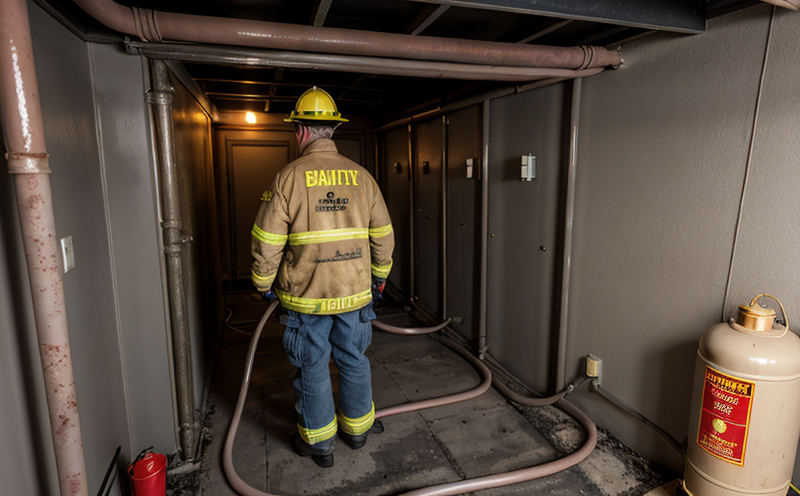Battery room fire suppression inspection
The importance of conducting regular inspections of battery rooms cannot be overstated. Battery rooms are often found in data centers, telecom facilities, and industrial settings where large-scale batteries are used for power backup or energy storage. These environments present unique challenges due to the high concentration of flammable materials and the potential for heat generation during charging processes. A fire in a battery room can escalate rapidly, leading to catastrophic failure of critical infrastructure. Therefore, stringent measures must be put in place to ensure these rooms are safe from fire hazards.
Fire suppression systems play a pivotal role in mitigating risks associated with batteries. These systems are typically designed to detect early signs of fire and activate automatically to extinguish the flames before they can spread. The inspection process for battery room fire suppression involves thorough testing of all components, including the detection system, suppression agents, nozzles, piping, and control panels.
During an inspection, we employ advanced techniques to simulate real-world conditions that may trigger a fire alarm or activation sequence. This includes exposing the system to heat sources and monitoring its response. We also conduct pressure tests on the piping network to ensure it can withstand the high-pressure discharge of suppression agents without leakage. Additionally, we assess the integrity of the detection system by introducing controlled smoke into the room.
The quality of fire suppression systems is paramount in battery rooms where even a minor failure could have severe consequences. Our team ensures that all components are up to date with the latest standards and regulations. Compliance with international standards such as ISO 14023, ASTM E647, and EN 30-500 is crucial for ensuring accurate testing procedures.
The inspection process also involves a detailed review of system documentation to verify that all components are properly installed, maintained, and calibrated. We ensure that the suppression agents meet the required specifications for fire suppression in battery rooms. This includes checking the shelf life, purity, and compatibility with the specific type of batteries present in the room.
Our team performs a comprehensive analysis of the system's performance under various scenarios to identify any potential weaknesses or areas for improvement. We provide detailed reports outlining our findings along with recommendations for corrective actions. These reports are designed to help facility managers make informed decisions about their fire safety programs and ensure compliance with all relevant regulations.
In summary, a thorough battery room fire suppression inspection is essential for maintaining the highest level of safety in environments where large-scale batteries are used. By adhering to rigorous testing protocols and ensuring full compliance with international standards, we can provide peace of mind knowing that these critical facilities are protected against fire hazards.
Why It Matters
The inspection of battery room fire suppression systems is crucial for several reasons:
To ensure the safety and integrity of large-scale batteries which can pose significant fire risks.
To prevent potential catastrophic failures that could lead to damage to infrastructure or loss of life.
To comply with regulatory requirements and industry best practices for fire protection in battery rooms.
To identify any potential weaknesses or issues before they escalate into major problems.
To maintain the reliability and effectiveness of fire suppression systems, ensuring they function correctly when needed.
Regular inspections are essential to safeguard against the unique challenges posed by battery rooms. By addressing these critical areas, we can significantly reduce the risk of fires and ensure that facilities remain operational and secure.
Quality and Reliability Assurance
The quality and reliability assurance process for battery room fire suppression inspections involves several key steps:
We begin by conducting a thorough review of system documentation to verify installation, maintenance, and calibration. This includes checking certifications from manufacturers and suppliers to ensure compliance with relevant standards.
Next, we perform functional tests on all components of the fire suppression system, including the detection system, nozzles, piping, and control panels. These tests are designed to simulate real-world conditions that may trigger a fire alarm or activation sequence.
We also conduct pressure tests on the piping network to ensure it can withstand the high-pressure discharge of suppression agents without leakage. This helps identify any potential weaknesses in the system’s design or installation.
In addition, we assess the integrity of the detection system by introducing controlled smoke into the room and monitoring its response. This ensures that the system is capable of accurately detecting fire hazards in a timely manner.
Our team also performs a detailed analysis of the system's performance under various scenarios to identify any potential weaknesses or areas for improvement. We provide comprehensive reports outlining our findings along with recommendations for corrective actions.
We ensure that all components are up to date with the latest standards and regulations, ensuring full compliance with international best practices. This includes adherence to standards such as ISO 14023, ASTM E647, and EN 30-500.
By adhering to rigorous testing protocols and ensuring full compliance with these standards, we can provide peace of mind knowing that critical facilities are protected against fire hazards. Regular inspections play a vital role in maintaining the highest level of safety in environments where large-scale batteries are used.





